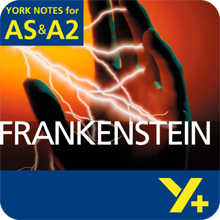Examiner's Notes
You assessed this answer as a B grade.
Hover over the highlighted text to read the examiner’s comments. These are linked to the Assessment Objectives, which are listed in the side panel.
Mary Shelley's "Frankenstein" was written when there was a lot of debate over the question of the life principle. John Abernethy, President of the Royal College of Surgeons, and his pupil William Lawrence, appointed as second Professor at the College in 1815 had different opinions. Lawrence looked at life from a very materialist position. Abernethy wanted to keep something in common with religious beliefs and argued that life could not be explained in material terms; something else was required that might be linked to the concept of the immortal soul. It's within this context that Mary Shelley makes Victor Frankenstein create a monster that could be said to be more human than he is.
I think it would be difficult to argue for the creature's humanity if human means the species. He's constructed out of a mixture of dead parts taken from graveyards, dissecting rooms and slaughterhouses; he's unnaturally large and demonstrates superhuman speed and abilities. In this respect, he is not human, but, as Victor initially planned, one of a 'new species'.
On the basis of his appearance, those who see him call him monstrous and not human. By calling the monster the 'filthy mass that moved and talked', for example, Victor denies his humanity, and makes him into a monstrous thing 'too horrible for human eyes to behold'. Victor wants always to name and blame 'the filthy daemon' (p. 77), the 'devil' (p. 78), the 'animal' (p. 79) and to decide that the monster's 'delight was in carnage and misery' (p. 78). This is how humans create monsters. Victor uses words to define the monster as other, to divide the human from the demonic or animalistic.
Traditionally, an 'abnormal' appearance would mean the opposite of a 'normal' human. To some extent, Mary Shelley draws upon this tradition in "Frankenstein" with the creation of a monstrous being that no one can look upon without abhorrence. Shelley also, however, challenges this tradition by suggesting true monstrosity is something that emerges more in what we do than in how we look. The monstrous and the human then become less easy to separate and it becomes possible to argue that the being that is called the monster is in fact more human than his monstrous creator.
This is shown in the way the creature longs for friends. He tries to join in with others and they are frightened and reject him. Even the De Lacey family who are seen as very kind and take in Safie won't accept him. His desire for companions, and particularly a female, contrasts with Victor Frankenstein's rejection of family and his evident reluctance to marry Elizabeth. When he talks of their forthcoming 'union' he is talking in very formal terms unlike those we expect from a lover.
It is only when he suffers from the viciousness of human society that he himself begins to act violently, to be a real monster. Shelley shows human beings both create and become monsters. Then again, given the way humans behave in this book, we might also say that his new 'monstrous' behaviour is quite generally characteristic of the 'human'. When Justine is executed that causes Elizabeth to say how, in their violence and cruelty, people appear to be 'monsters thirsting for each other's blood'. If the monster is often human, then the human is often monstrous.
